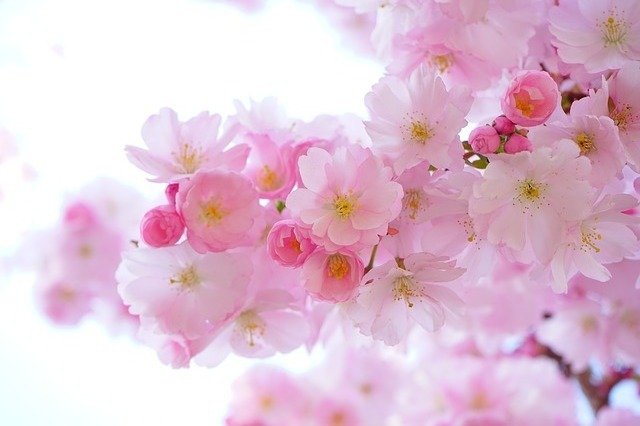Characteristics of Entomophilous flowers
All entomophilous flowers share a few common characteristics.
Some of the features are discussed below.
- Size of Entomophilous Flowers
The Entomophilous flowers are usually large and conspicuous.
Examples of Entomophilous flowers are are Clitoria, Stenolobium stans, and Spathoglottis.
If each flower is small, for example, Ixora and Salvia, it occurs in a large and conspicuous inflorescence.
In some cases, tiny florets are grouped into a conspicuous head ( for example, sunflower flower) or enclosed in large, conspicuous bracts ( for example, in Bougainvillea).
- Color of Entomophilous Flowers
The petals of entomophilous flowers are usually brightly colored.
In cases where the petals themselves are pale and inconspicuous, other parts are modified into large, bright petal-like structures that take over the function of attracting insects.
These parts may be sepals (for example Mussaenda), bracts ( for example Bougainvillea and Poinsettia), or spathes (for example bananas and aroids).
- Scent and Nectar of Entomophilous Flowers
Entomophilous flowers are often scented. Those which are pollinated by nocturnal insects (for example moths) are more strongly scented as scent becomes the major source of attraction when color fails.
All entomophilous flowers secrete nectar which is the food of many insects like the honey bee and the moth.
- The shape of Entomophilous Flowers
Entomophilous flowers are specially shaped to facilitate pollination by particular types of insects.
The nectar is often situated in a position that can only be reached by a few types of insects visiting the flower to become dusted with pollen grains as well as to distribute the latter to the stigmas.
- Stamens and Stigmas of Entomophilous Flowers
These flowers produce relatively small quantities of large, sticky, or spiky pollen grains.
Being heavy, the pollen grains are not likely to be carried away by the wind.
Their spiky, sticky nature enables them to adhere firmly to the bodies of visiting insects.
The stigmas are flat or lobed and have sticky surfaces to which pollen grains can adhere easily.
Characteristics of Anemophilous Flowers
All Anemophilous flowers, like entomophilous flowers, share a few common characteristics.
Some of them are the following.
- Size of Anemophilous flowers
The flowers of Anemophily are usually small and inconspicuous but are borne in large inflorescences.
Maize, grass, and coconut are typical examples of plants with anemophilous flowers.
- Color of Anemophilous Flowers
The flowers are usually not brightly colored.
The calyx and corolla together form the perianth which is usually pale or green and inconspicuous.
- Scent and Nectar of Anemophilous flowers
There is no scent or nectar in these flowers as these two factors are important only for the attraction of bees.
- The shape of Anemophilous flowers
Anemophilous Flower, unlike entomophilous ones, has no particular shape.
They are usually small and exposed.
- Stamens and Stigmas
The Anemophilous flowers produce enormous numbers of light, powdery, and smooth pollen grains.
Most of these pollen grains are likely to be wasted and only a small number of them finally reach the stigmas.
Thus, large numbers have to be produced to make up for the high extent of wastage.
The anthers are large and are loosely attached to long filaments.
As a result, they can swing easily in the slightest breeze.
This helps in the dispersal of the pollen grains.
The stigmas are large and feathery and hang outside the flower.
The feathery structure of the stigma provides a large surface area on which pollen grains floating in the air may be trapped.








